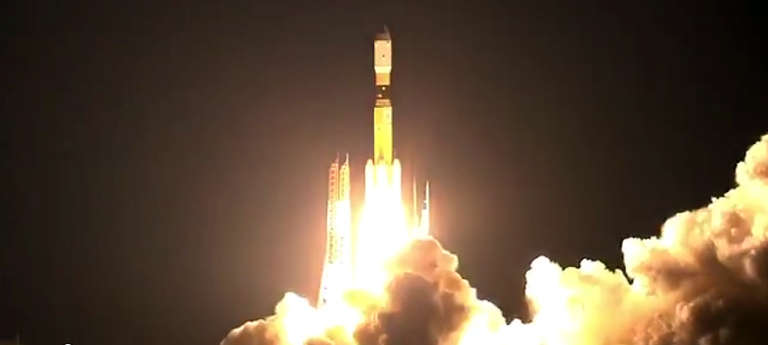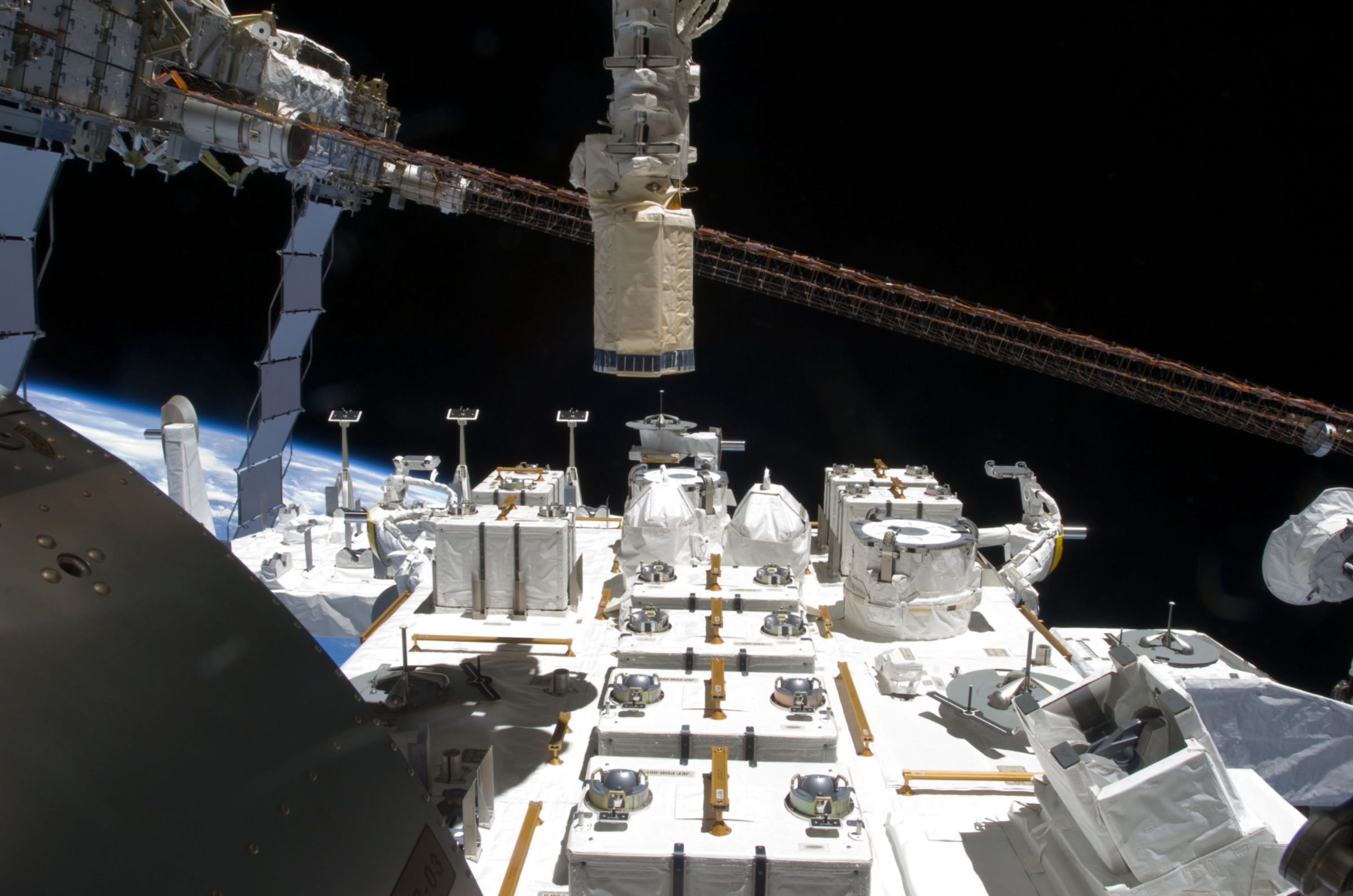Jason Davis • Aug 05, 2013
Japan sends fourth cargo craft to International Space Station
Japan’s HTV-4 resupply spacecraft is safely on its way to the International Space Station following a Sunday launch from the Tanegashima Space Center. Kounotori, which means ‘white stork,’ is packed with 3.5 tons of food, supplies and hardware. It is expected to arrive at the station Friday, when NASA astronauts Karen Nyberg and Chris Cassidy will snag the cargo ship with Canadarm and berth it to the station’s Harmony node.
Kounotori lifted off atop an H2-B rocket at 4:48 a.m. local time Sunday (3:48 p.m. EDT, 19:48 UTC Saturday). JAXA, the Japan Aerospace Exploration Agency, reported a nominal 15-minute flight ending with the spacecraft gently gliding away from its launch vehicle.
Launch replay of HTV-4 Video: JAXA / NASA
Naturally, I wanted to post a pretty, high-resolution launch photo, but as of Sunday night, JAXA doesn't have any on their website. The best photo I’ve seen so far is this image by Kyodo News, which was posted at the Japan Times. You can click to enlarge it. In the meantime, here's a screen capture from the launch video, which I tried to enhance in Photoshop:

A few locals captured some really nice launch shots and posted them on Twitter (credit for finding them goes to the forums at NASASpaceflight.com). I wasn’t able to contact any of the photographers for permission to repost the high-res versions, so I’ll embed their tweets and you can follow the links to the original files.
雲を赤く染めながら昇っていくH2Bロケット pic.twitter.com/9ouZY0JPxf
— 東山正宜 (@itaimecom) August 3, 2013
先ほどのH2B4号機打ち上げの様子その4 噴煙が肉眼でも非常に明るく見える。SRBも放物線を描いて落下 @沖縄本島南部 http://t.co/IlRKfZT8cj
— ふう (@fuu_5866) August 3, 2013
So, what's onboard HTV-4, anyway? A lot of media coverage has focused on Kirobo, a friendly, talking robot that can recognize voices and faces, and process natural language. Kirobo sounds neat, but the robotic technology demonstration that really caught my attention was the Robotic Refueling Mission, or RRM.
Here’s the concept: most satellites are not designed to be serviced once they get to space. When they run out of fuel or cryogenic coolant, their mission is usually over. Hopefully, that will soon change; we're getting close to the point where sending a robot to repair an ailing spacecraft is within our capabilities.
But when that happens, what about so-called ‘legacy’ satellites that were not designed with robotic servicing in mind? That's where RRM comes in. Phase I of the project used the station's Dextre robot to peel back the protective layers of a simulated spacecraft, access a fuel tank and inject it with ethanol. When Dextre was finished, it installed a 'quick disconnect' cap to make future refills easier.
Phase II of RRM will demonstrate the techniques needed to replenish cryogenic refrigeration. Aboard HTV-4 is an RRM On-orbit Transfer Cage, or ROTC (a classic example of a NASA nested acronym), as well as a task board. The transfer cage will mount on a sliding table inside the Japanese Experiment Module, and pass through an airlock out to the module's Exposed Facility, the JEM-EF. The JEM-EF has been called the station's porch. Dextre will install the task board on the porch that will be used during the next series of demonstrations. Phase II should get underway in 2014, when another bundle of RRM equipment arrives at the station.

Support our core enterprises
Your support powers our mission to explore worlds, find life, and defend Earth. You make all the difference when you make a gift. Give today!
Donate

 Explore Worlds
Explore Worlds Find Life
Find Life Defend Earth
Defend Earth

